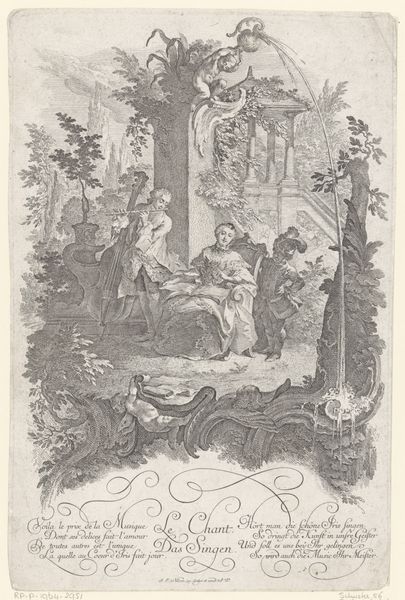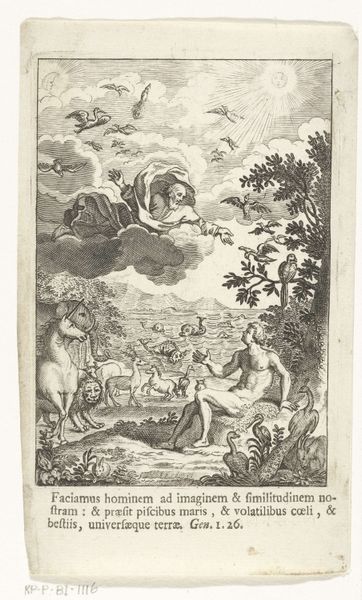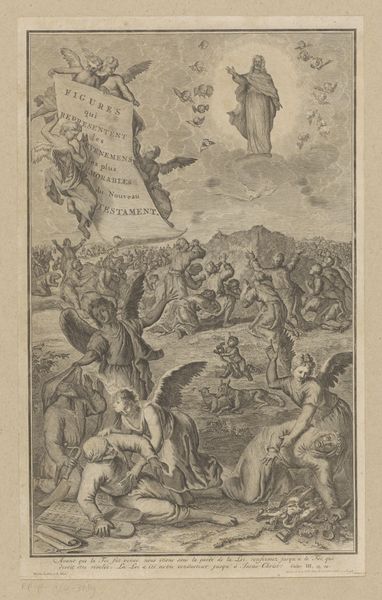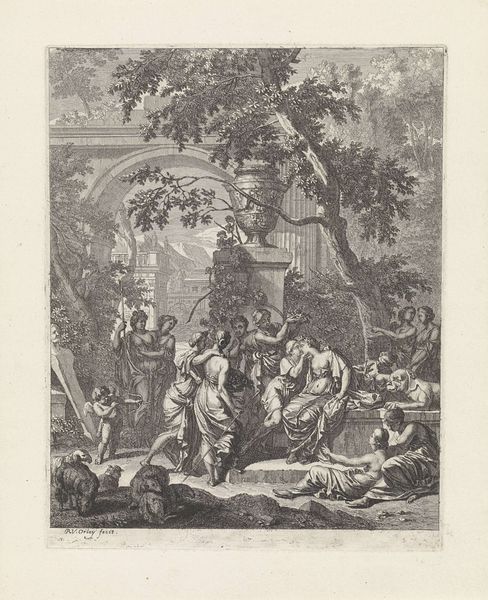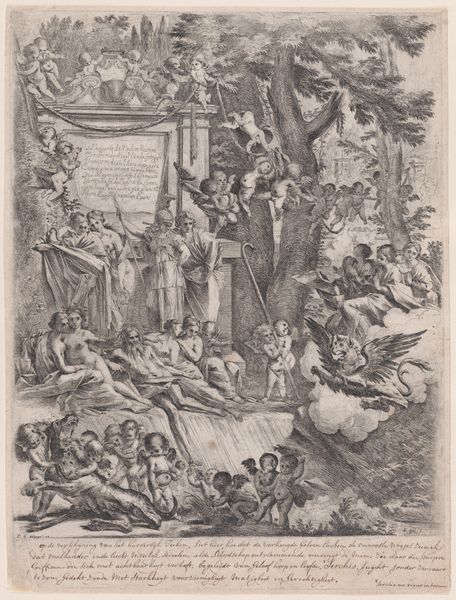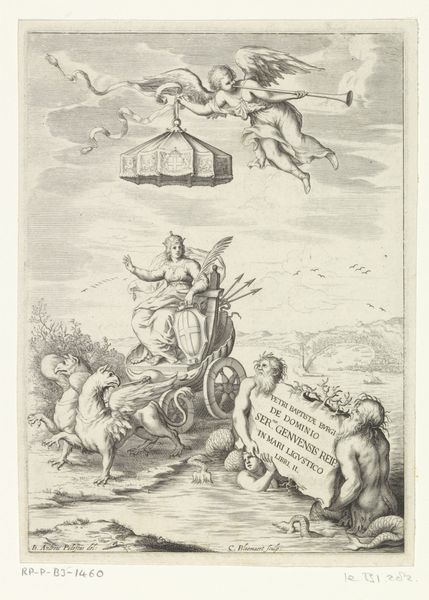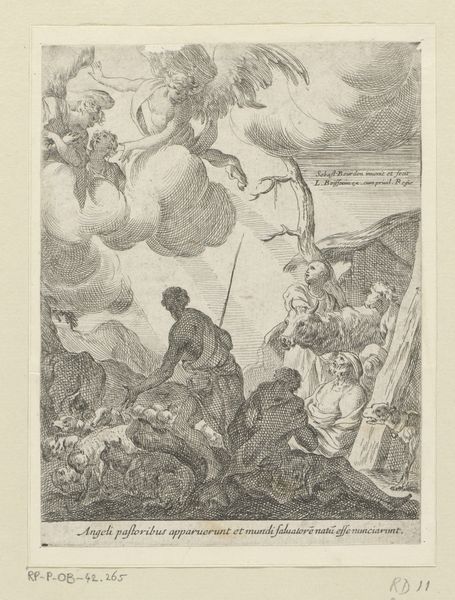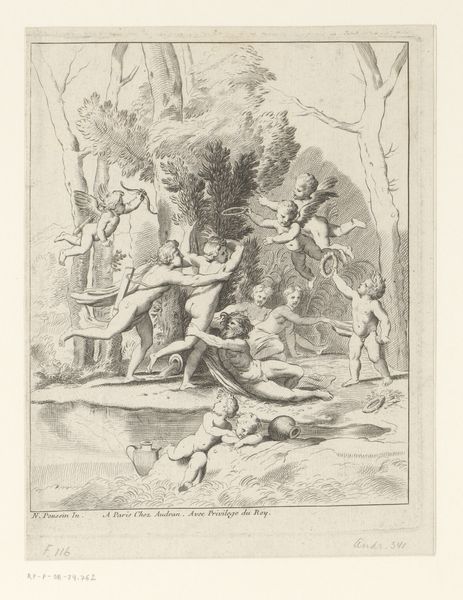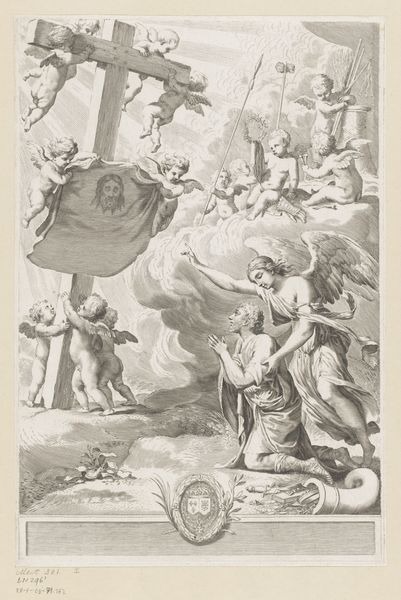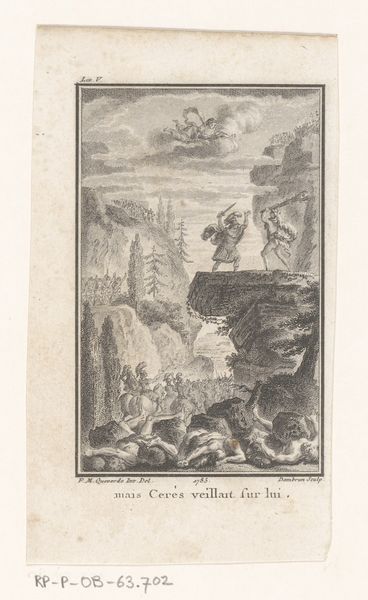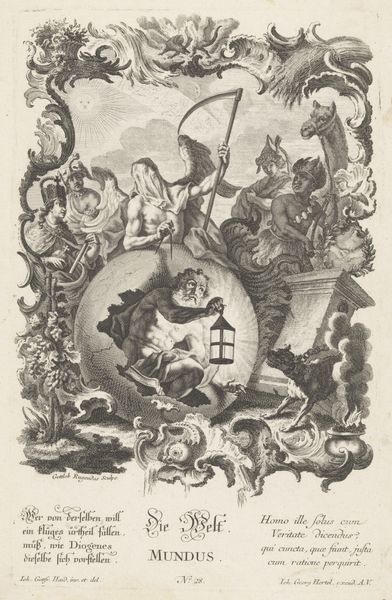
print, engraving
#
allegory
#
baroque
# print
#
old engraving style
#
figuration
#
personal sketchbook
#
line
#
history-painting
#
engraving
Dimensions: height 327 mm, width 209 mm
Copyright: Rijks Museum: Open Domain
Editor: This is Johann Gottfried Haid’s “Allegory of Eternal Life,” an engraving from 1745, currently held at the Rijksmuseum. It feels like a battle between lightness and darkness, with those cherubic figures contrasting starkly with the somber monk and that intense figure on the right. What do you see in this piece? Curator: What I see is a visualization of the power structures of the 18th century. Consider the artist, Haid, operating within a society deeply influenced by religious doctrine. This print, in its baroque extravagance, reflects an active engagement with questions of morality, divine judgment, and social control. Editor: Social control? Curator: Absolutely. Notice how the virtuous are elevated – literally on that little platform, watched over by angels. Now compare that to the shadowed figure of the monk, next to the mysterious darkness at the heart of this composition. The visual language here reinforces the prescribed path to salvation. Editor: So it’s less about personal faith and more about public adherence? Curator: Precisely. Think about the function of prints like these in the 18th century. They were widely distributed, entering homes and shaping popular consciousness. This “Allegory,” then, wasn’t just an artwork. It was a tool, reinforcing societal norms and dictating the terms of "eternal life". And what about that snake curling around? What might that symbolize in the socio-religious context of the time? Editor: I see… a symbol of temptation, and the ever-present possibility of straying from the 'right' path. It makes you wonder about those who felt excluded from that promise of eternal reward. Curator: Exactly! Recognizing this forces us to question whose stories are being told – and whose are being actively suppressed. Editor: I didn’t think about the social implications like that; thank you. Curator: It's these deeper connections that transform art history into an exploration of human power.
Comments
No comments
Be the first to comment and join the conversation on the ultimate creative platform.
